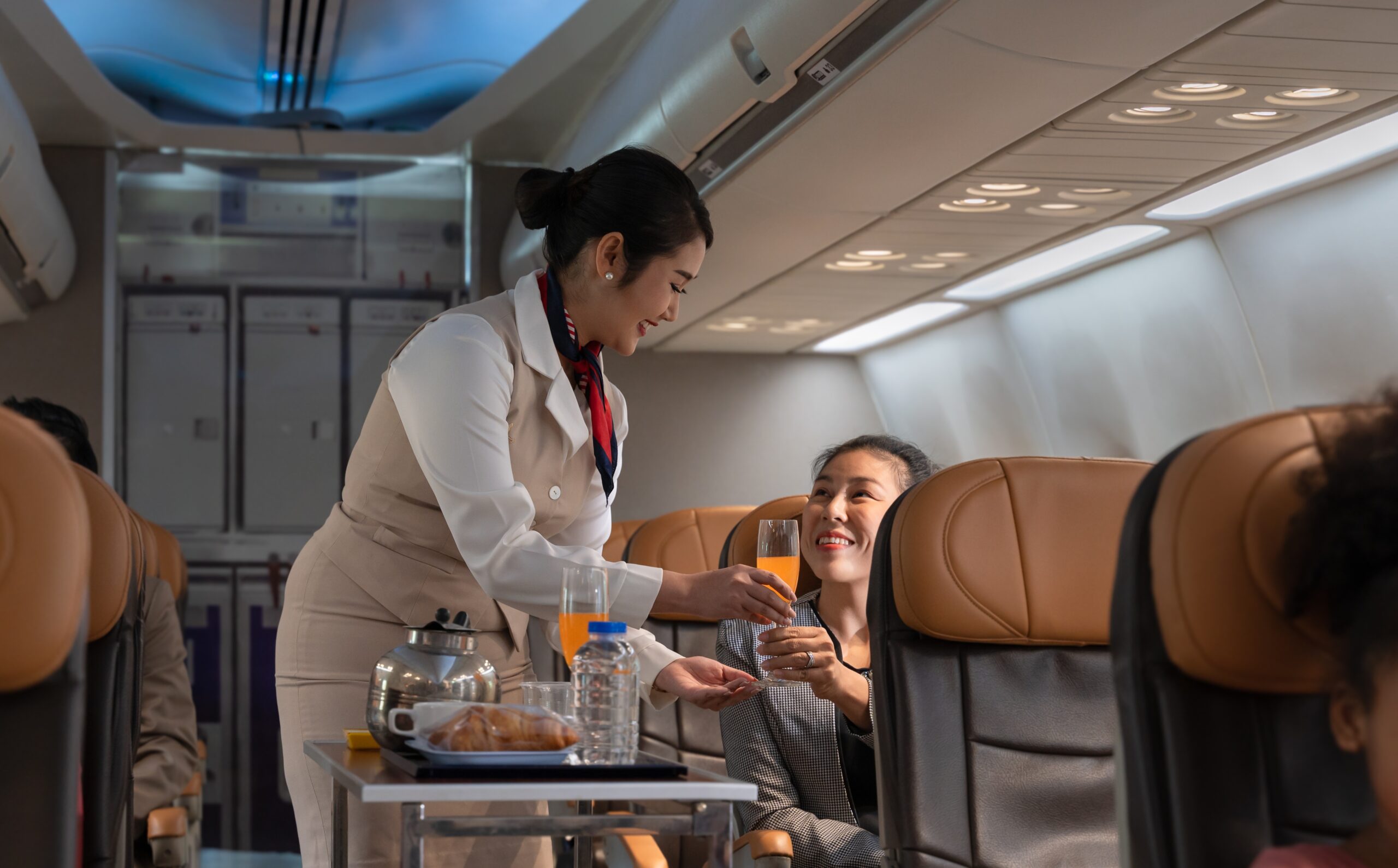Sky-High Sustainability: The Unsung Heroes of Eco-Friendly Airline Dining
We’ve all applauded the arrival of bamboo cutlery and reusable cups. They are the celebrated ambassadors of the sustainable airline dining revolution, and rightly so. But while they bask in the well-deserved spotlight, a dedicated crew of quiet, hardworking heroes is operating behind the scenes, doing the essential work that truly completes the green journey. What if we told you that the most authentic measure of an airline’s environmental commitment isn’t found in a single product, but in the entire ecosystem of the onboard service? It’s time to pull back the curtain on the humble yet powerful items that are redefining what it means to be a sustainable airline.
The truth is, in the intensely weight-sensitive world of aviation, every gram has always counted. This is precisely why single-use plastics became the industry standard for decades; they were lightweight and inexpensive. But we now face the staggering environmental cost of that convenience. Today, truly innovative eco onboard service strategies understand that sustainability is not a single gesture but a complex, beautiful symphony. For that symphony to resonate, every single instrument must be in tune. The supporting players—the napkins, the trays, the packaging—are no longer just background noise. They are essential to the harmony of a truly sustainable operation.
What Makes Sustainable Options Important
Consider the humble napkin, an item so commonplace we barely give it a second thought, a classic symbol of waste. But what if napkins could be a powerhouse of sustainability?
The new generation of napkins is doing just that. We’re now seeing materials like high-yield, fast-growing bamboo and sugarcane bagasse take center stage. These plants have no pesticides and require a fraction of the water compared to traditional wood pulp, making them a win for the planet from the very beginning. Even their appearance tells a story. They have a soft, off-white hue that signals an unbleached process, meaning fewer harsh chemicals were released into our environment. They are fully compostable, destined to complete their lifecycle by returning nutrients to the earth, not taking up space in a landfill.
Napkins might not be glamorous, but they add up and they can be part of the solution.
Then there is the tray, the sturdy stage upon which the entire dining experience is presented. The movement here is decisively beyond plastic. Advanced molded fiber trays, crafted from recycled paperboard or agricultural waste, are leading the way, offering a lightweight, sturdy foundation that is capable of resisting moisture and grease without a plastic coating. Forward-thinking designs embrace a full circular economy model. These trays are engineered for a closed-loop system, where after their primary duty, they can be collected and processed through industrial composting or recycling streams. This ensures their journey ends in renewal, not as waste.
To the traveler, a compostable tray liner might not stand out, but to the planet, it makes a difference.
Packaging is the invisible hero of sustainable airline dining products. It protects condiments, desserts, snacks, and it is everywhere. Change is happening on two fronts. There are plant-based plastics like PLA (Polylactic Acid), derived from corn starch or sugarcane. They look and feel like traditional plastic, but are biodegradable under commercial composting conditions. Second, innovative, grease-resistant paper packaging for items like cookies and sandwiches is steadily replacing plastic clamshells. When sourced from responsibly managed forests and treated with water-based coatings, this packaging represents a monumental shift away from our reliance on fossil fuels.
From Cutlery to Compostables: Airlines Are Making It Count
When an airline makes the commitment to this holistic, crew-based approach to sustainability, the benefits create a powerful ripple effect. These advanced materials often translate to a lower overall weight, critically reducing fuel burn and lowering emissions. It also simplifies the waste stream. When an entire meal service, from the tray to the napkin to the condiment wrapper, is either compostable or recyclable, it virtually eliminates the problem of contaminated waste, making recycling and composting programs actually feasible. Finally, this approach provides a powerful, authentic story. It goes beyond corporate policy; it’s a tangible commitment that airlines can share with their passengers. It demonstrates a deep, genuine dedication to the planet that resonates powerfully with the values of modern travelers.
The journey toward fully sustainable airline dining is a continuous climb, but it’s one you don’t have to navigate alone. By looking beyond the cutlery and embracing the entire service ensemble, your airline can achieve a new altitude in eco-friendly operations. This is where the story becomes a partnership.
At RMT Global Partners, we don’t just supply the unsung heroes; we provide the entire cast. From the compostable napkins and robust, molded-fiber trays to the innovative plant-based packaging, our curated portfolio is designed to create a sustainable symphony at 30,000 feet. Let’s build a meal service that reflects your sustainability goals and delivers a polished passenger experience. Contact RMT Global Partners today to get started.






